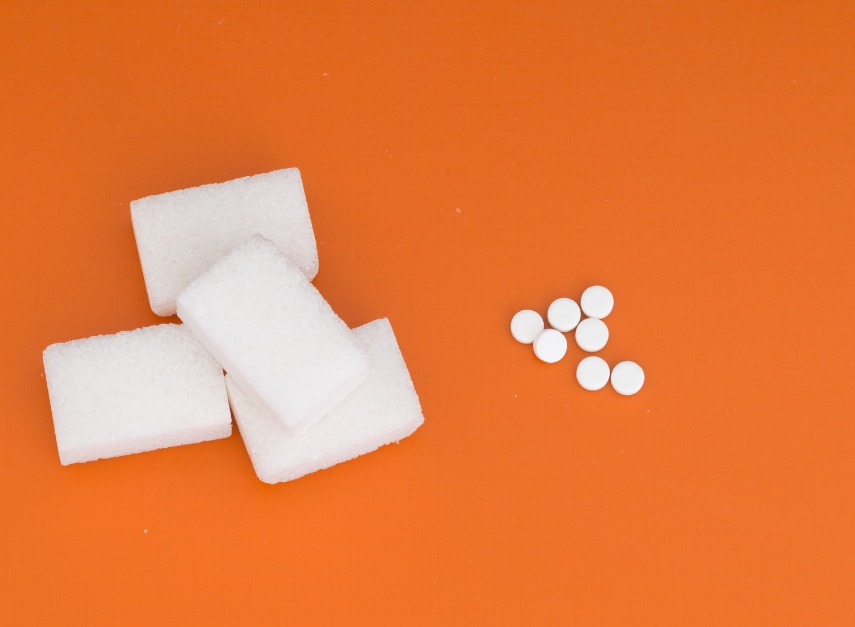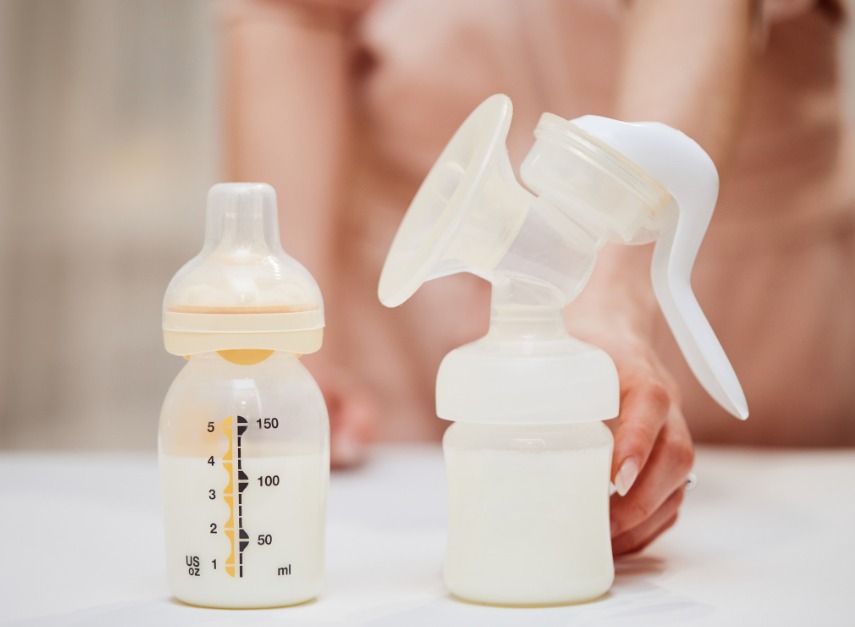- Home
- Share
- Forum
- General forums
- Good to know
- 11 Not-So-Healthy 'Health' Foods
11 Not-So-Healthy 'Health' Foods
- 95 views
- 1 support
- 3 comments
All comments

Courtney_J
Community managerGood advisor
![]()
Courtney_J
Community manager
Last activity on 13/10/2022 at 16:47
Joined in 2020
1,280 comments posted | 88 in the Good to know group
10 of their responses were helpful to members
Rewards
-
Good Advisor
-
Contributor
-
Messenger
-
Committed
-
Explorer
-
Evaluator
Hi everyone,
How are you doing? Have you seen this interesting thread?
What do you think? Did you know some of these "healthful" items were actually not as good for you as they seem? What are some of your favourite healthy meals or snacks?
Also, did you know that we have recipes here on Carenity? Do you have a family favourite or a recipe worthy of "Star Baker"? You can consult our latest recipes and even share your own here!
Take care,
Courtney
See the signature
Courtney_J, Community Manager, Carenity UK
Close all
See the responses

robjmckinney
AmbassadorGood advisor
![]()
robjmckinney
Ambassador
Last activity on 20/04/2025 at 15:41
Joined in 2015
622 comments posted | 103 in the Good to know group
56 of their responses were helpful to members
Rewards
-
Good Advisor
-
Contributor
-
Messenger
-
Committed
-
Explorer
-
Evaluator
@Courtney_J Most healthy food is in fact unhealthy, to reduce tasty ingredients they replace them with less healthy ingredients because the public are to thick to notice. Cheap food is more likely to be more healthy as they replace expensive things like sugar and replace them with non sugar alternatives. Cheap biscuits and jams already have replace the unhealthy sugars, so are much healthier than reduced whatever supposed healthy product. Nut breakfast bars full of sugar, Special K has always had more calories than standard Cornflakes, M&S food/sandwiches/cakes full of sugar and so unhealthy. Salt another distraction as it hardly makes little difference to blood pressure, one maybe to points, fruit juice one of the worst options as high in sugars. So in general healthy foods are a con, another classic '5 a day' veg, invented by a Mid Western wholesaler who wanted to promote his veg, no science involved, just a sales con.
See the signature
robjmckinney
Hide the responses
![]()
lassyxo
![]()
lassyxo
Last activity on 04/04/2023 at 00:31
Joined in 2017
12 comments posted | 4 in the Good to know group
Rewards
-
Contributor
-
Messenger
-
Explorer
@Courtney_J I saw a documentary film a few years ago on sugar and that was really a turning point for me. We don't keep fruit juice in the house anymore. I'd rather eat my calories than drink them.
Give your opinion
Survey
Articles to discover...
Subscribe
You wish to be notified of new comments
Your subscription has been taken into account








Margarita_k
Community managerGood advisor
Margarita_k
Community manager
Last activity on 07/10/2020 at 11:39
Joined in 2016
1,195 comments posted | 118 in the Good to know group
1 of their responses was helpful to members
Rewards
Good Advisor
Contributor
Messenger
Committed
Explorer
Evaluator
Fruit juice and a bran muffin for breakfast; a Caesar salad for lunch; a protein bar snack; and a turkey burger with all the fixings for dinner. Sounds like a reasonably healthy day, right? Not so fast. All of these foods have a healthy reputation, but they all have something else in common, too: They’re hiding the types of sugar, fat, and calories that can bust your diet or even lead to weight gain.
Get the inside scoop on these and other popular diet darlings to find out what to avoid and what to eat instead.
1. Protein Bars and Shakes: Unsatisfying Snacks
If you’re short on time or you work out a lot, meal replacements loaded with protein may sound like a great idea, but these so-called health food options can quickly turn into diet traps. "They are marketed with trendy nutrition names like ‘gluten free,’ ‘organic,’ ‘dairy free,’ ‘low fat,’ and ‘natural,’ but they are a scapegoat for healthy eating,” says Manuel Villacorta, RD, author of Eating Free: The Carb-Friendly Way to Lose Inches, Embrace Your Hunger, and Keep the Weight Off for Good. Besides their often-high sugar and fat content, you might end up eating far more protein and calories than you need. For great snacks that are better than a bar and clock in at less than 200 calories, try 5 ounces of nonfat Greek yogurt with a cup of berries, apple slices with 2 tablespoons of nut butter, or a hard-boiled egg and whole-wheat crackers.
2. Granola: Sugar Overload
More than any other food, granola has tricked the diet industry into thinking it’s healthy, when really those organic, all-natural whole grain and nut mixes are packed with calories, fat, and sugar. Just a quarter-cup serving of granola can easily have upwards of 130 calories, not to mention at least 4 grams of sugar and 5 grams of fat. To get the crunch you crave, make your own healthy mix to skip out on added sugars. Measure your portions carefully, and sprinkle granola on top of yogurt instead of eating it alone.
3. Dried Fruit: Sugary Saboteur
Dried fruits are great sources of concentrated vitamins, minerals, and fiber, but — and it’s a big but to avoid — you have to limit your intake because you’re also getting very concentrated calories and sugar. Consider prunes, which are dried plums: Just one cup of prunes contains more than 400 calories and 45 grams of sugar while one cup of fresh plum has just 76 calories and 16 sugar grams. Plus, when you eat fresh fruit you get the added water content that can help you feel full.
4. Sushi Rolls: Beware of Sodium
In theory, sushi rolls are almost perfect — protein in the form of seafood (often from healthy fatty acid sources such as salmon and tuna) combined with seaweed, veggies, and a small amount of rice. If you ate sushi in the traditional small quantities along with some miso soup, you’d actually be doing well for both nutrition and diet. But modern sushi rolls are a little more dangerous: Many varieties, such as tempura rolls, come fried or topped with mayo and cream cheese. Plus, soy sauce contains excess sodium, and all the white rice can cause blood sugar spikes in people with diabetes. When eating sushi, it’s best to stick to brown rice rolls, fresh veggies, and no sauce.
5. Caesar Salad Calorie-Bomb
Romaine lettuce, the foundation of Caesar salad, is richer in vitamins and minerals than iceberg lettuce, so that’s a good start. But look past the leaves, and you’ll see plenty of diet trips, such as high-fat dressing, calorie-rich cheese, and fatty croutons. Just because you ask for dressing on the side when you order your salad doesn’t mean you’re spared all the excess calories, and a fully-loaded Caesar can top 800 calories. Instead, top your greens with grilled chicken strips and a drizzle of balsamic vinegar.
6. High-Calorie Fish Sandwiches
Fish is often touted as a low-calorie superfood (in fact, the American Heart Association recommends eating fish at least twice a week), but once you fry that fish, slather it in high-calorie tartar sauce, and slap it between two slabs of white bread or a buttered roll, you’ve more than negated any health benefit you might see. Opt for grilled fish or chicken on an open-face sandwich or a fish taco loaded with salsa and vegetables — hold the sour cream and cheese!
7. Margarine: Hidden Trans Fat
Margarine can be a better choice than butter, particularly for people who are concerned about their heart health. But not all margarines are created equal: Many stick forms contain hidden trans fat, which can be even worse for your heart than the saturated fat in butter. When choosing a stick, go for the brand with the lowest levels of fat and cholesterol. If you’re at risk for heart disease, choose a brand that has been fortified with plant stanols and sterols, which can help reduce bad cholesterol levels.
8. Sugary Fruit Juice
A drink that's 100 percent fruit juice sounds like a healthy way to check off your daily fruit needs. The problem is, even if you’re drinking unadulterated juice (not a juice drink, a diet trap with tons of added sugar and sometimes barely 10 percent real juice), you’re missing out on the fiber and the nutrients available only in the whole food, especially fruits with edible peels. In general, experts advise that only a third of the 2.5 cups of fruit you need each day should come from juice. And moderation matters for this health food. Serving sizes for store-bought juice in bottles and at juice bars and cafes are out of control, and if you’re not careful, you can add hundreds of calories to your daily diet through juice. He suggests scaling down your fruit juice servings to one 4-ounce glass a day, or skip fruit juice entirely and just eat the real thing.
9. Fat-Filled Bran Muffins
Store-bought and café muffins may seem like a healthy food choice, but too often their whole grains are lost in a sea of oversized portions, sugar, sodium, and fat — a resounding diet trap. To add insult to injury, some store-bought muffins skip out on the whole-grain ingredients and many don’t contain enough to counteract the sugar and fat in your diet anyway. You can keep your muffins from becoming a diet trap by making them yourself and boosting the fiber fill-up with oat bran and ground flaxseed — just refrain from using supersized muffin tins to maintain diet portions.
10. Needless Nutrition Waters
Although it seems intuitive to combine two components of healthy nutrition — water and vitamins — into one package, brand-name vitamin or nutrition waters might not be the best choice for your body or your budget. Dietitians generally recommend a varied diet as the best way to get good nutrition, in part because your body may not be able to absorb vitamins as effectively without other dietary elements such as small amounts of fat and the fiber. That’s why a big mixed salad with a touch of homemade dressing is the health food choice to get your vitamins and minerals — and just plain water from the tap.
11. Diet-Busting Turkey Burgers
Turkey is generally thought of as a fit and trim alternative to red meat, but depending on the cut and preparation, a burger can easily have more fat than a lean cut of beef, not to mention the calories from the bun you save when you just eat a cut of meat. Look for the leanest ground turkey available at the store, or go completely meatless and try veggie burgers. Regardless of your patty preference, go light on the condiments, layering vegetables onto a whole-grain bun or lettuce wrap instead of cheese and mayo .
Source: everydayhealth.com